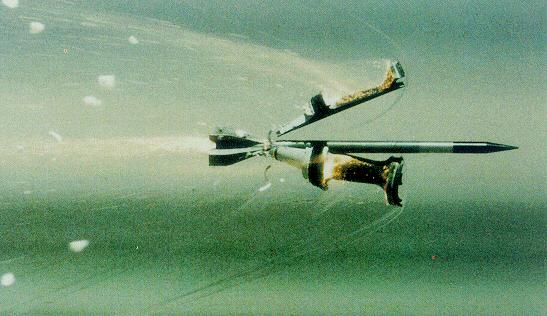Quote:
Originally Posted by Krauter

For kinetic AT rounds, aren't the majority of them made of either depleted uranium or tungsten? (ie: Denser metals?)
|
Yes, they work by having a dense core, with a larger "case" around it (I don't know the technical term). The case allows the Sabot round to be loaded into much larger bore guns than the core.

The case, as you can see, breaks away in flight, and the core flies just like a dart would. Upon impact with an armored target, it bores through the armor via the kinetic energy, but that process "plasmafies" the core. So now this super heated uranium plasma is bouncing around inside the target, incinerating anything it touches. I think they work best on armored targets, as they need that process to be effective. They'd simply pass through light targets, like cars and airplanes.
Now imagine this same round, coming out of a naval gun with MORE kinetic energy than those huge 14" and 16" ships used to carry. Since this is (I assume) a strictly Line of sight round, I'd imagine they'd use this type of round in Surface to Surface warfare, as it makes a very small hole, but huge damage inside.